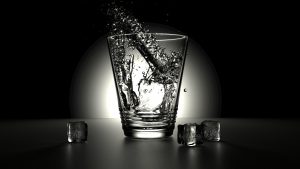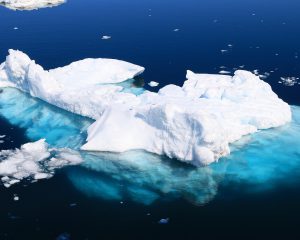Drinking water is water that can be drank or used for domestic and industrial purposes, without risk to health, and that complies with the sanitary requirements defined by decree.
It can be naturally drinkable or go through various treatments to become so.
The water that we find in our glasses can have various origins, but whatever its origin, it must have an irreproachable quality.
The potabilization of water
Potability criteria
To be declared clean for consumption, water must meet very strict potability criteria dictated by the Ministry of Health and the Superior Council of Public Hygiene.
To date, there are 63 potability criteria, which are checked very frequently and whose standards vary according to the legislation applicable.
According to the Water Information Center, they can be grouped into 5 main categories:
- Physico-chemical parameters : they correspond to characteristics such as pH, temperature, conductivity or hardness of the water and delimit the maximum quantities not to be exceeded for certain components such as ions, chlorides, potassium and sulfates.
- Organoleptic parameters : they concern the color, taste and smell of the water. The water must be pleasant to drink, clear and odorless. These parameters are related to the comfort of consumption, they have no direct sanitary value.
- Microbiological parameters : they allow to control that the water does not contain any pathogenic germs, such as viruses, bacteria or parasites, which can cause diseases, even epidemics.
- Parameters related to undesirable substances : they concern substances such as nitrates, nitrites and pesticides that can cause numerous health problems.
- Parameters related to toxic substances : micropollutants such as arsenic, cyanide, chromium, nickel, selenium and some hydrocarbons are subject to very high and strict standards because of their toxicity.
The stages of water potabilization
According to the Water Information Center
First part :
- The catchment : the water is taken by catchment in a borehole or a well. The soil acts as a natural filter to ensure the good quality of water. But a treatment is necessary to offer a drinking water, totally free of its impurities. To do this, the water is taken to a treatment plant.
- Screening : as it enters the treatment plant, the water passes through mesh (with gaps of about 5 cm) that remove the largest fragments (stones, plastics, branches, leaves, etc.).
- Sieving : then, the water passes through a screen with much tighter grids, allowing the retention of smaller fragments (small pebbles, cigarette butts, twigs…).
- Flocculation-coagulation (or decantation) : this step consists of pouring a coagulant product into the water so that the impurities gather in clusters and sink to the bottom of the decantation tank. The water then becomes clearer.
- Sand filtration: the water passes through a filter composed of a thick layer of sand that intercepts the last small visible particles.
Second part :
- Ozonation: invisible impurities are eliminated by a gas called ozone. By oxidizing all organic substances, ozone removes pesticides and pathogenic micro-organisms from water.
- Filtration: the clarified water passes through a final filter composed of activated carbon grains. These grains contain bacteria that eliminate toxic components by absorption.
- Chlorination : the water is disinfected with chlorine in order to guarantee its quality as it travels through the pipes from the treatment plant to the consumer. In France, the quantity of chlorine used for disinfection is not fixed by an European standard, the criterion to be respected is defined by “the absence of odor, taste or abnormal change”.
- Quality control and sanitary control: at the end of all these steps, the treated water is controlled by the Water Department in accordance with the quality and sanitary safety standards defined for consumption.
The different types of drinking water
Spring water
Spring water comes from deep groundwater. It has not gone through any pollution or chemical treatment and is naturally clear for consumption.
Spring water is subject to the same regulations as tap water and must therefore meet all potability criteria.
Spring water has some particularities:
- Its composition may vary over time, as well as its mineral content. This is why it is usually chosen by consumers who pay more attention to the label on each bottle.
- Spring water can naturally contains carbon dioxide which makes it fizzy.
Mineral water
Mineral waters are spring waters whose mineral and trace element content gives them therapeutic virtues.
Unlike spring water, mineral water does not meet the same regulations as tap water. Indeed, some contents do not comply with the potability criteria and would be refused in the public distribution network. They are therefore subject to specific standards and can reach levels that would not be tolerated for drinking water.
For example, the maximum fluoride content in drinking water is set at 1.5mg/L whereas mineral water can contain up to 5mg/L.
Warning :
Some highly mineralized waters are not suitable for daily use. It is advisable to check the composition on the label.
Water from icebergs
Iceberg water is obviously safe to drink because it is certainly the purest water that can exist on Earth. Indeed, the icebergs have existed for thousands of years, so they have not been affected by the pollution that affects today water resources.
The idea of exploiting this resource was certainly raised in the 1970’s by the engineer Georges Mougin who wished to tow small drifting icebergs towards regions lacking drinking water. Unfortunately, the price and the constraints of this achievement did not allow to carry out this project.
Today, icebergs are the object of a trade which is not in adequacy with the current environmental issues. However, there are still iceberg hunters, such as the Canadian Edward Kean, who collects this precious water to sell it for $1 a liter. Similarly, the Berg brand sells this water at a golden price in grocery stores (10.50€ for 75cl of Iceberg water from Canada).
Tap water
Tap water can come from the treatment of waste water or ground water. This water is not drinkable, it must go through many treatments before being totally free from impurities and declared drinkable. That being said, it is not less qualitative than mineral or spring water.
Before arriving in our taps, water goes through 4 stages:
- The catchment: taking the water from its source
- Treatment: decontamination of the water in a treatment plant
- Storage: in tanks or water towers for distribution to homes
- Sanitation: water “recycling” and cleaning so that it can be used directly as drinking water
Little historical reminder : drinking water at the heart of conflicts
The planet is covered with 70% of water, but less than 1% is fresh and liquid water and therefore directly usable by humans.
This precious resource is unequally distributed among countries. Indeed, there are currently 9 countries called “The 9 Water Powers” by the United Nations : Brazil, Colombia, Russia, India, Canada, the United States, Indonesia, Congo and China ; which hold 60% of the world’s fresh water.
Its rarity and its very unequal distribution make it difficult to access. Fresh water has therefore been at the heart of conflicts for hundreds of years.
Some examples :
1st – 2nd centuries: North Africa is conquered by Rome. Conflicts quickly broke out between the Roman military colonies and the local populations for the control of the water resource.
15th century: in the mountain’s communities of Valais in Switzerland, conflicts between villages appear for the capture of mountain streams. Canals were destroyed and inter-communal confrontations, sometimes bloody, took place.
1913-1925: bombings are perpetrated on the diversion aqueduct from the valley reserved for supplying water in the city of Los Angeles.
1990 : Major intercommunal violence broke out between Kyrgyzstan and Uzbekistan over the sharing of water in Osh in the Fergana Valley. This violence resulted in 300 deaths.
April 1999-February 2001 : in Kenya, clashes between farmers and nomadic breeders over access to and use of water resulted in more than 100 deaths.
September 2004 : In the southern province of Huila in Angola, disputes over access to drinking water escalated into inter-ethnic clashes resulting in several deaths.



